When the water runs dry
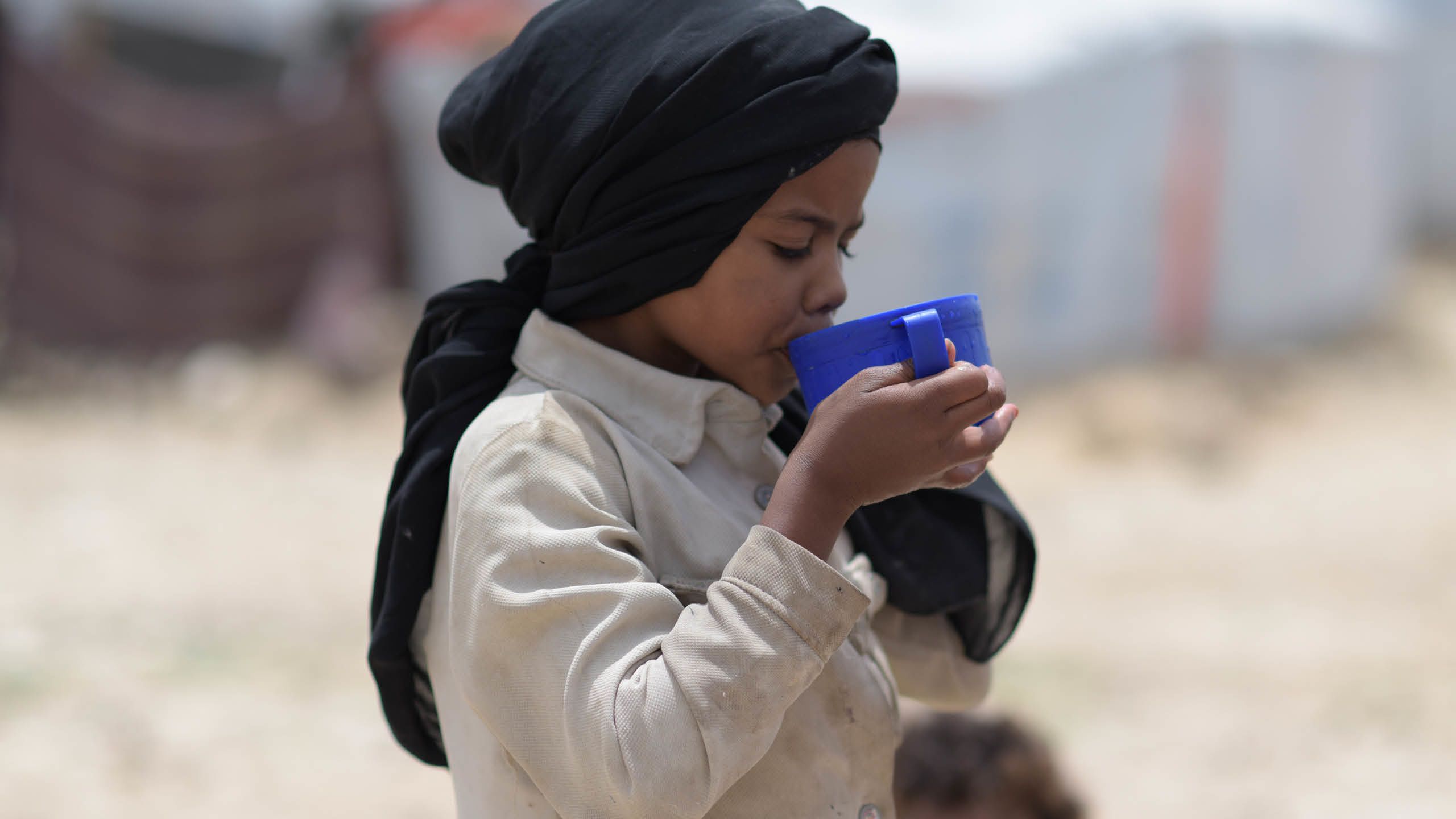
Yemen was already one of the driest countries on earth. Now, the pandemic has cast its water problems into even sharper focus. So why is funding for water running out? And what is being done to turn on the taps again?
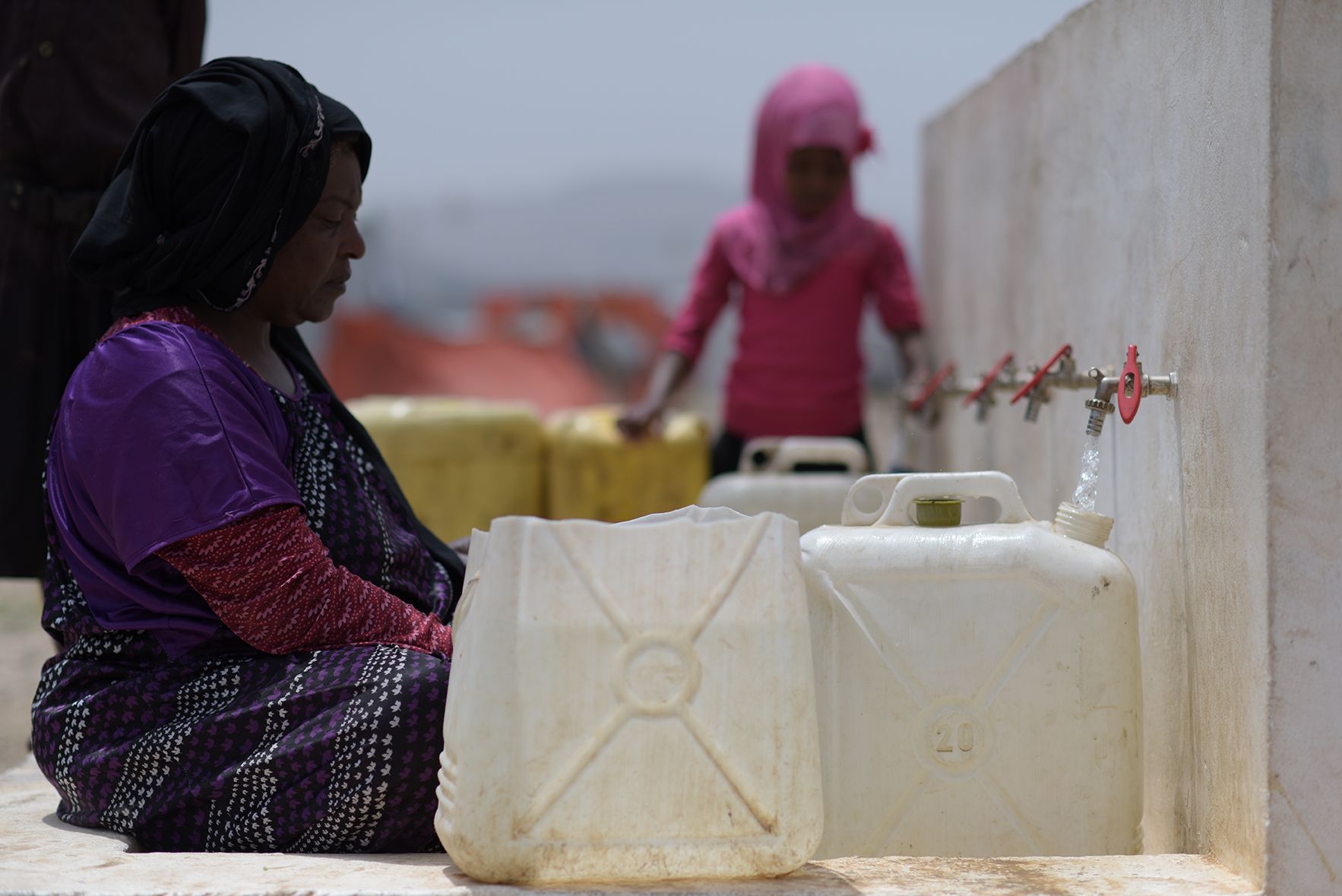
Al-Raboeyah filling water in Kharef camp in northern Yemen. Photo: Ibrahim Al-Salmi/NRC
Al-Raboeyah filling water in Kharef camp in northern Yemen. Photo: Ibrahim Al-Salmi/NRC
Al-Raboeyah is filling containers in the intense heat. The water comes out clear and plentiful. “We fled the war,” she explains, as she returns to her nearby tent. “This is the sixth year for us away from our home.”
Al-Raboeyah is one of 700 people living in the Kharef camp in northern Yemen. All have come here seeking safety from the fighting that has raged across the country for years.
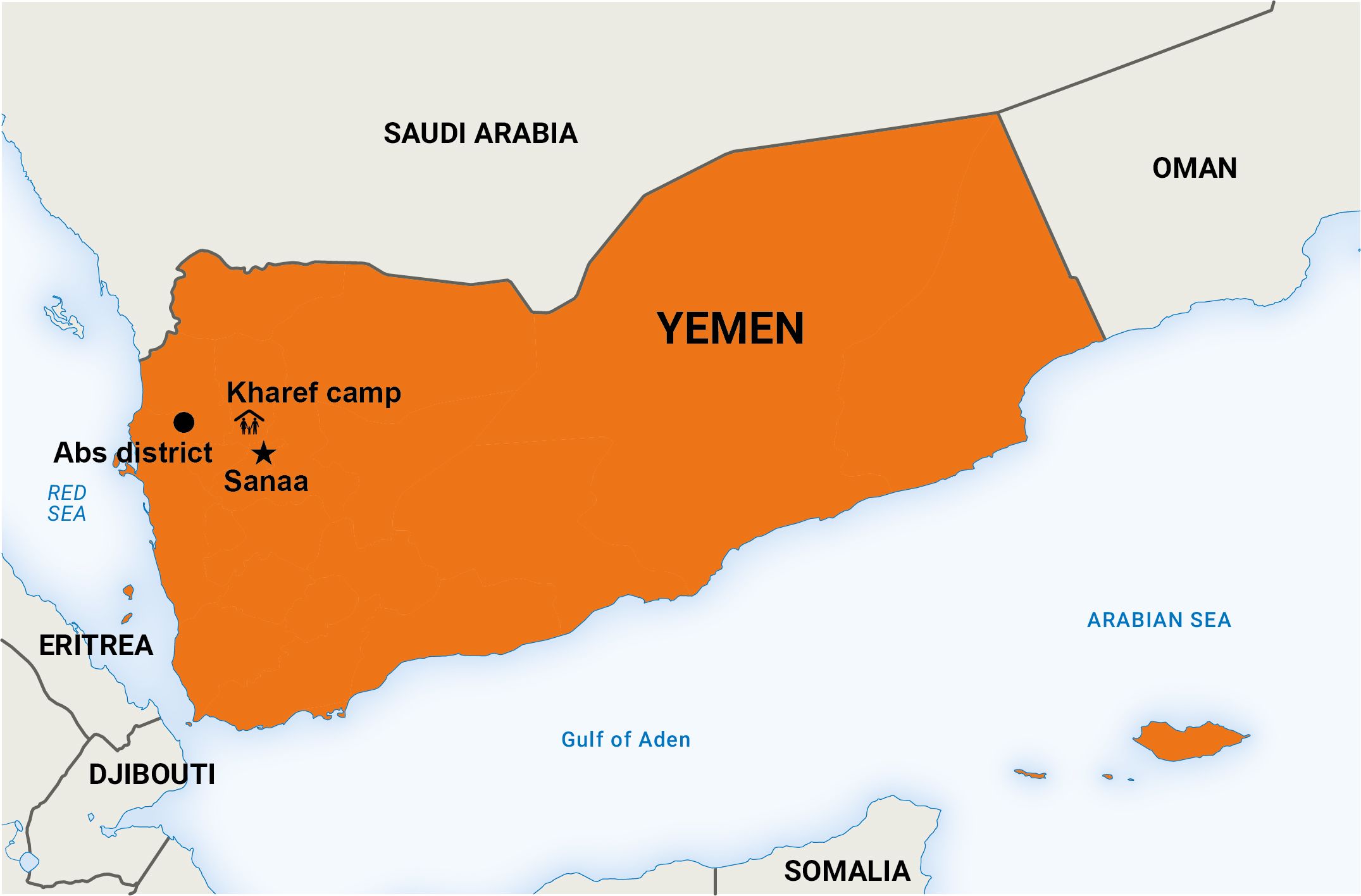
Clean water is a problem in many parts of Yemen. Families like Al-Raboeyah’s who are living in tents or temporary shelters find it particularly difficult to get enough to drink or keep clean and healthy.
But recently, a little practical support for Al-Raboeyah and her neighbours has made a huge difference.
The world’s
largest sand sea
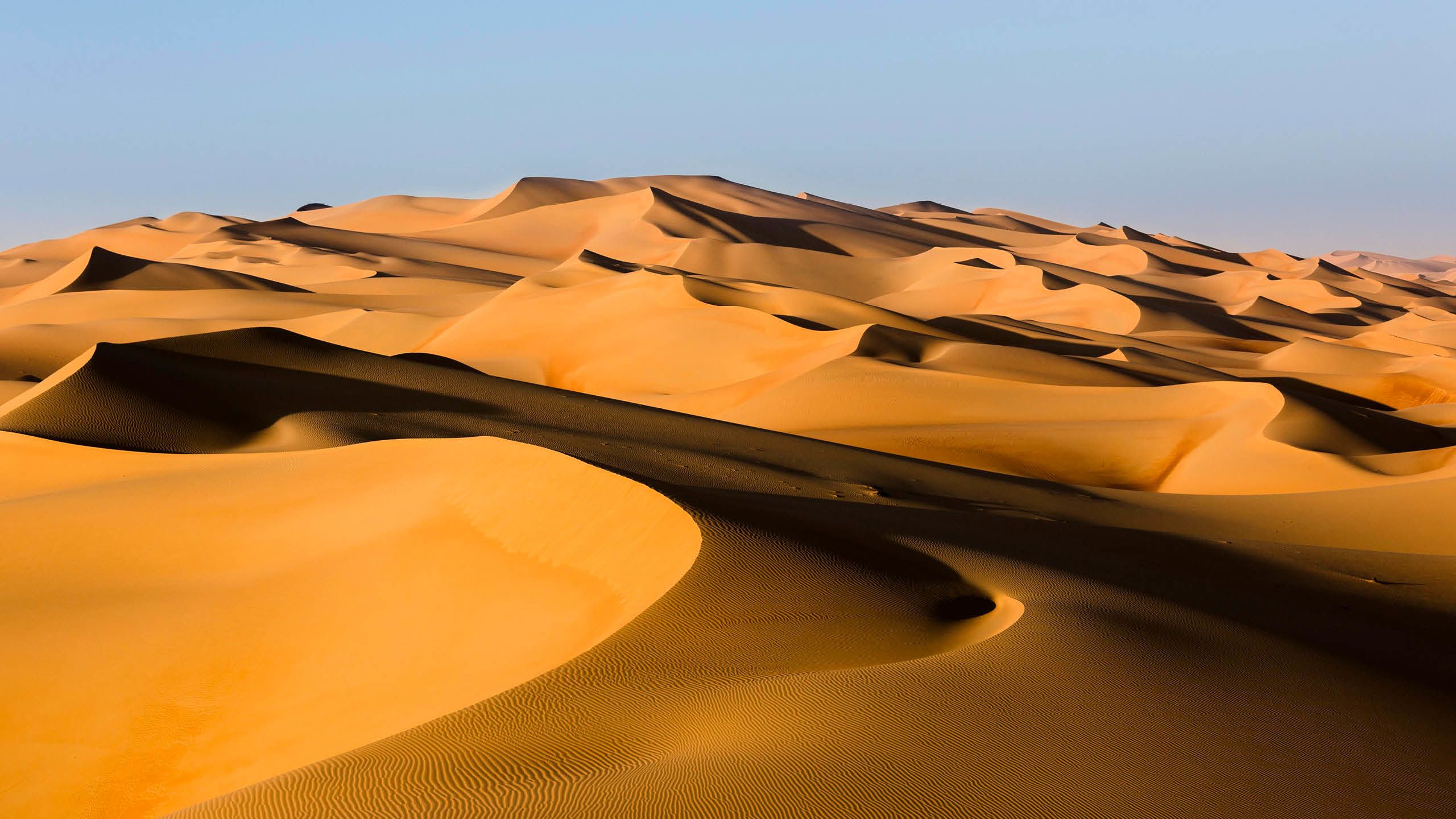
Water has always been a precious resource in Yemen. Each winter, every river in the country dries up. In the Yemeni section of the great Rub Al-Khali desert, temperatures can reach a fiery 50C. Some places see no rain for years on end. Only 3 per cent of the country is suitable for growing crops.
But pockets of lushness exist. Clever use of irrigation has allowed Yemenis to grow corn, wheat, barley, sorghum, mangoes, melons, papayas, peaches, grapes and bananas.
In the highland areas, where rain is more plentiful, exquisite agricultural terraces have created productive farms out of steep hillsides.
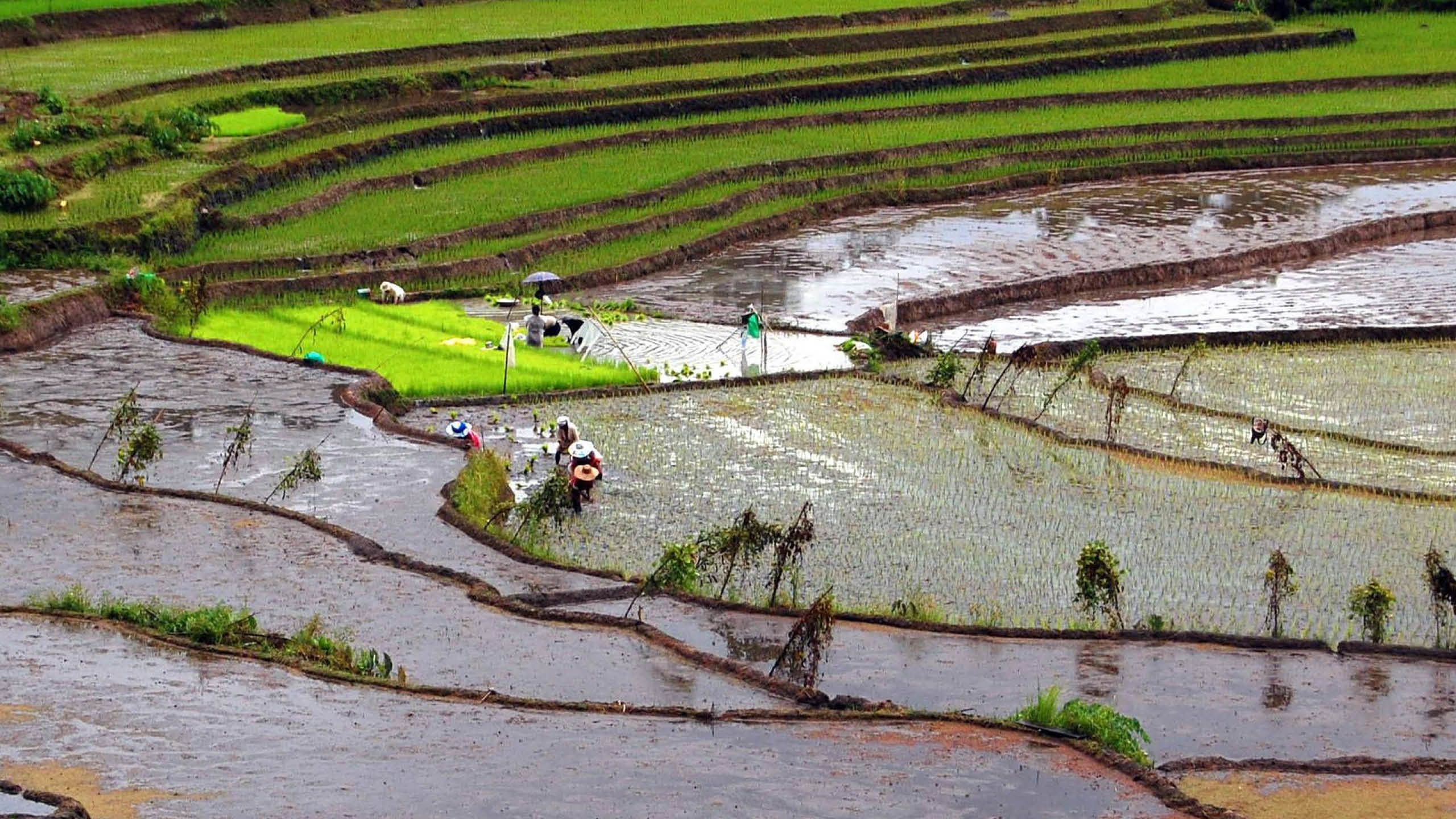
Rain in the highland areas allows for productive farming. Photo: ~MVI~
However, five years of war have brutalised this precious infrastructure. Water networks, water tanks and dams have been bombed and shelled, or fallen into terrible disrepair.
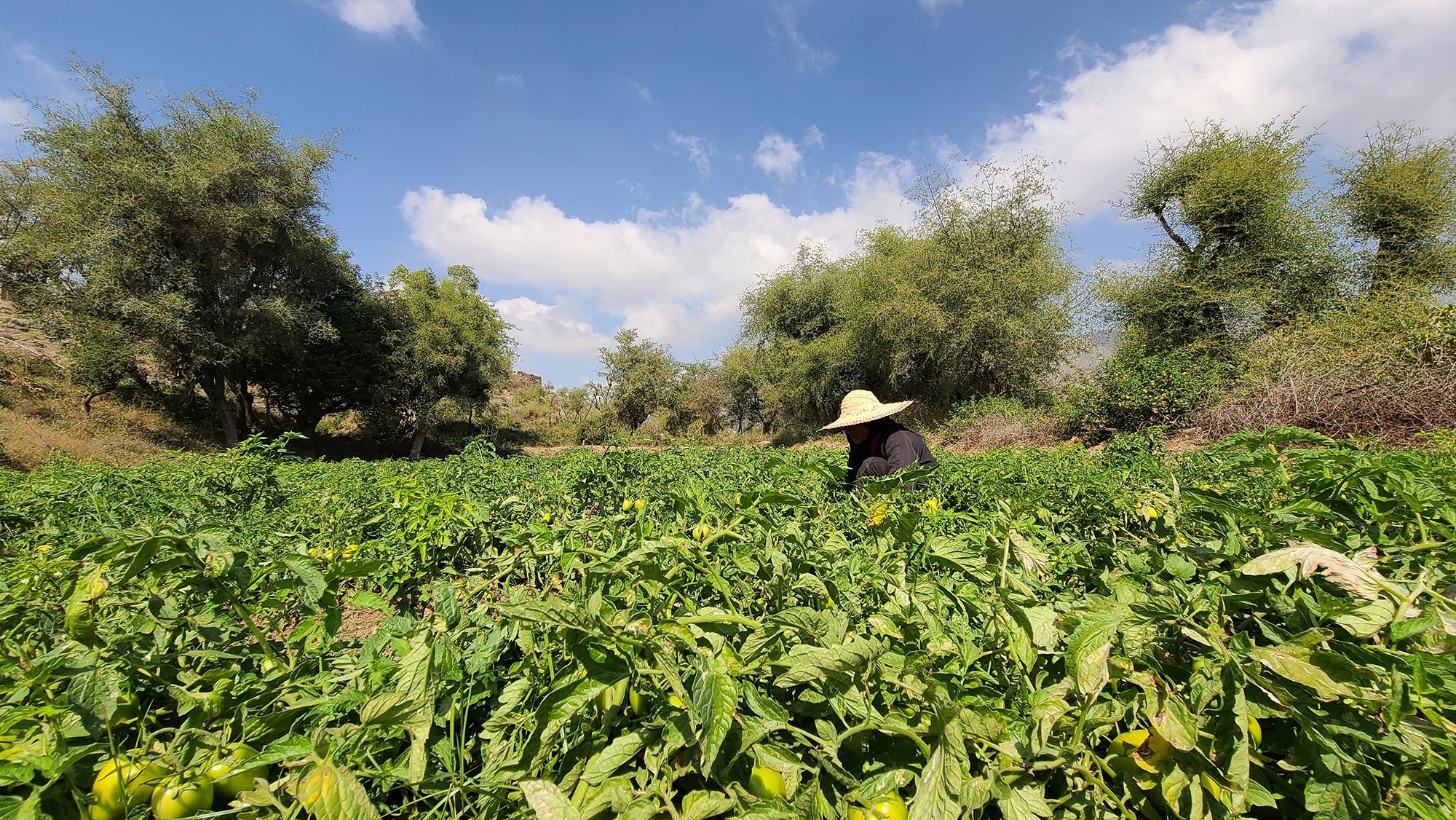
The tomato harvest in mountainous Taiz governorate earlier this month. With irrigation, the dry winter months can still yield a vibrant crop of tomatoes, onions and okra. NRC has been supporting farmers to plant the land, with funding from the Yemen Humanitarian Fund. Photo: Riona McCormack/NRC
With a staggering 3.6 million people fleeing their homes because of the war, often into arid areas or overcrowded camps, water has gone from being a scarce commodity to a life-threatening problem.

Rain in the highland areas allows for productive farming. Photo: ~MVI~
Rain in the highland areas allows for productive farming. Photo: ~MVI~

The tomato harvest in mountainous Taiz governorate earlier this month. With irrigation, the dry winter months can still yield a vibrant crop of tomatoes, onions and okra. NRC has been supporting farmers to plant the land, with funding from the Yemen Humanitarian Fund. Photo: Riona McCormack/NRC
The tomato harvest in mountainous Taiz governorate earlier this month. With irrigation, the dry winter months can still yield a vibrant crop of tomatoes, onions and okra. NRC has been supporting farmers to plant the land, with funding from the Yemen Humanitarian Fund. Photo: Riona McCormack/NRC
A new virus and
an old disease
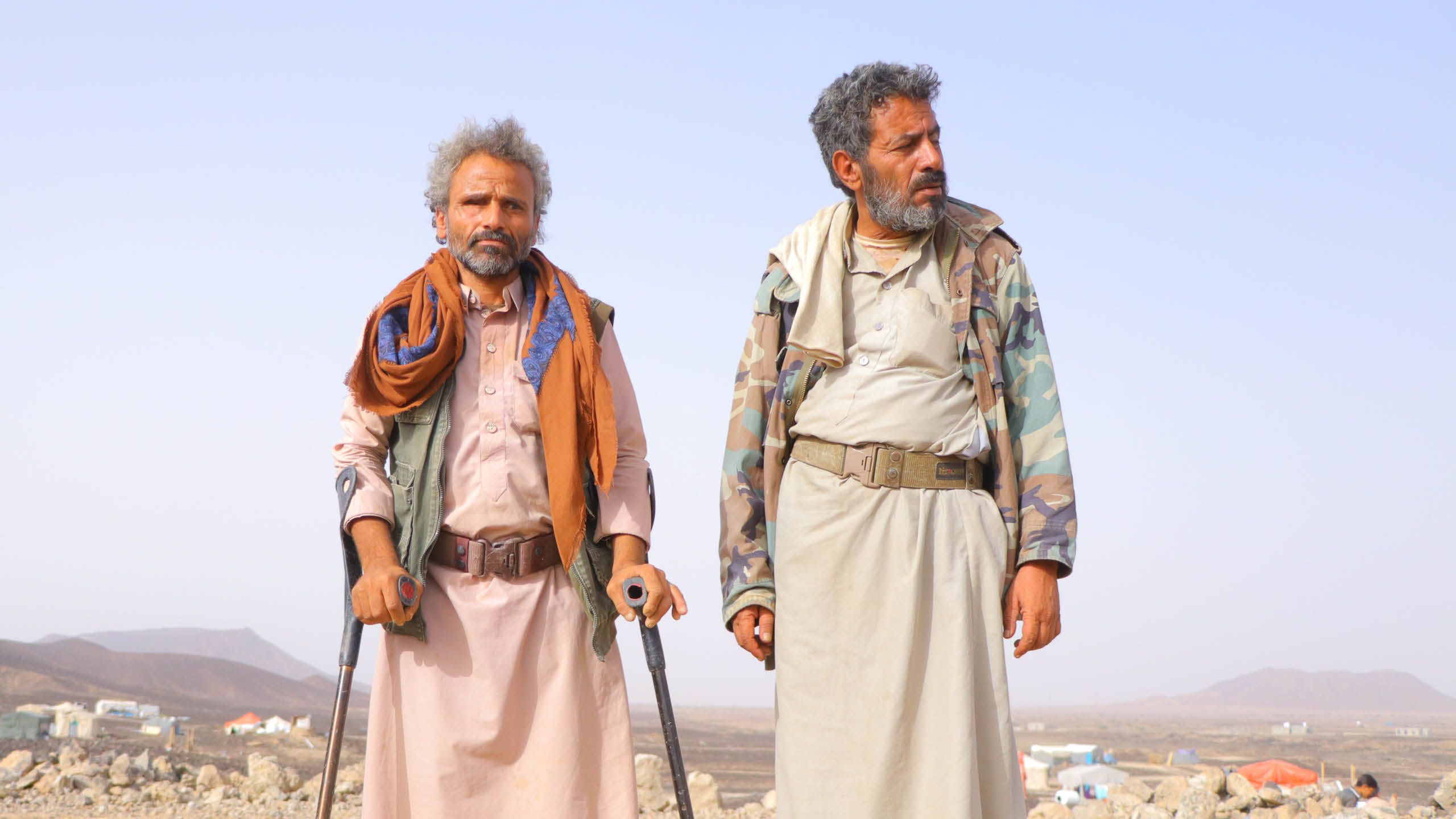
The Covid-19 pandemic has made the struggle unimaginably worse. One of the most effective ways to protect against the virus is handwashing and good hygiene. But two thirds of Yemenis can’t get enough clean water and three out of four families have no soap.
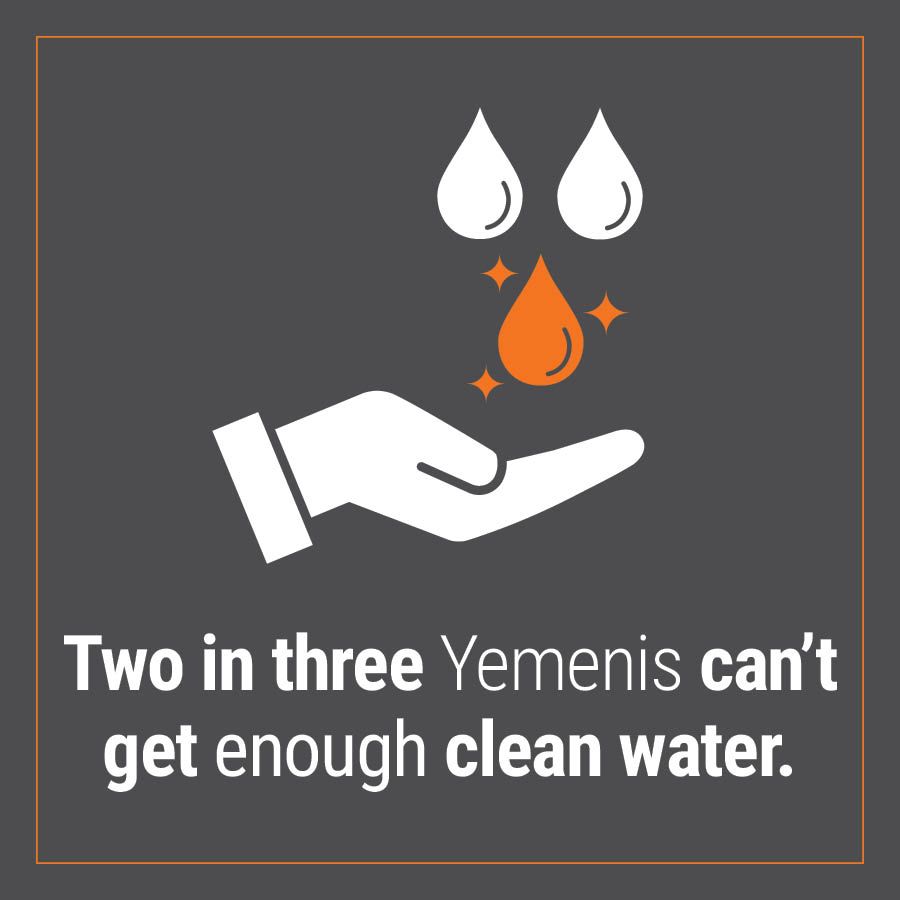
And there is another water-related killer to contend with. Just two years ago, Yemen became the site of the largest outbreak of cholera in modern history. A disease which is easily prevented through proper sanitation and clean water, it has been successfully eradicated from most parts of the world.
But in Yemen, the war has allowed this once-banished disease to spread with a vengeance. Children are also dying from acute diarrhoea.
Many people could be saved by simply purifying a well, laying new water pipes or repairing a water pump.
This is exactly what the Norwegian Refugee Council (NRC) is doing in communities across the country.
Meet the families who are living
in a school in Yemen, because they have
no other place to shelter.
Getting the water flowing again
Many communities receive water in containers by truck, but this is only a temporary fix. In Al-Raboeyah’s camp, NRC spoke to the local water committee and came up with a better solution.
A new pump was installed, along with over 2,000 metres of pipes – and a new solar energy system to power the pump.
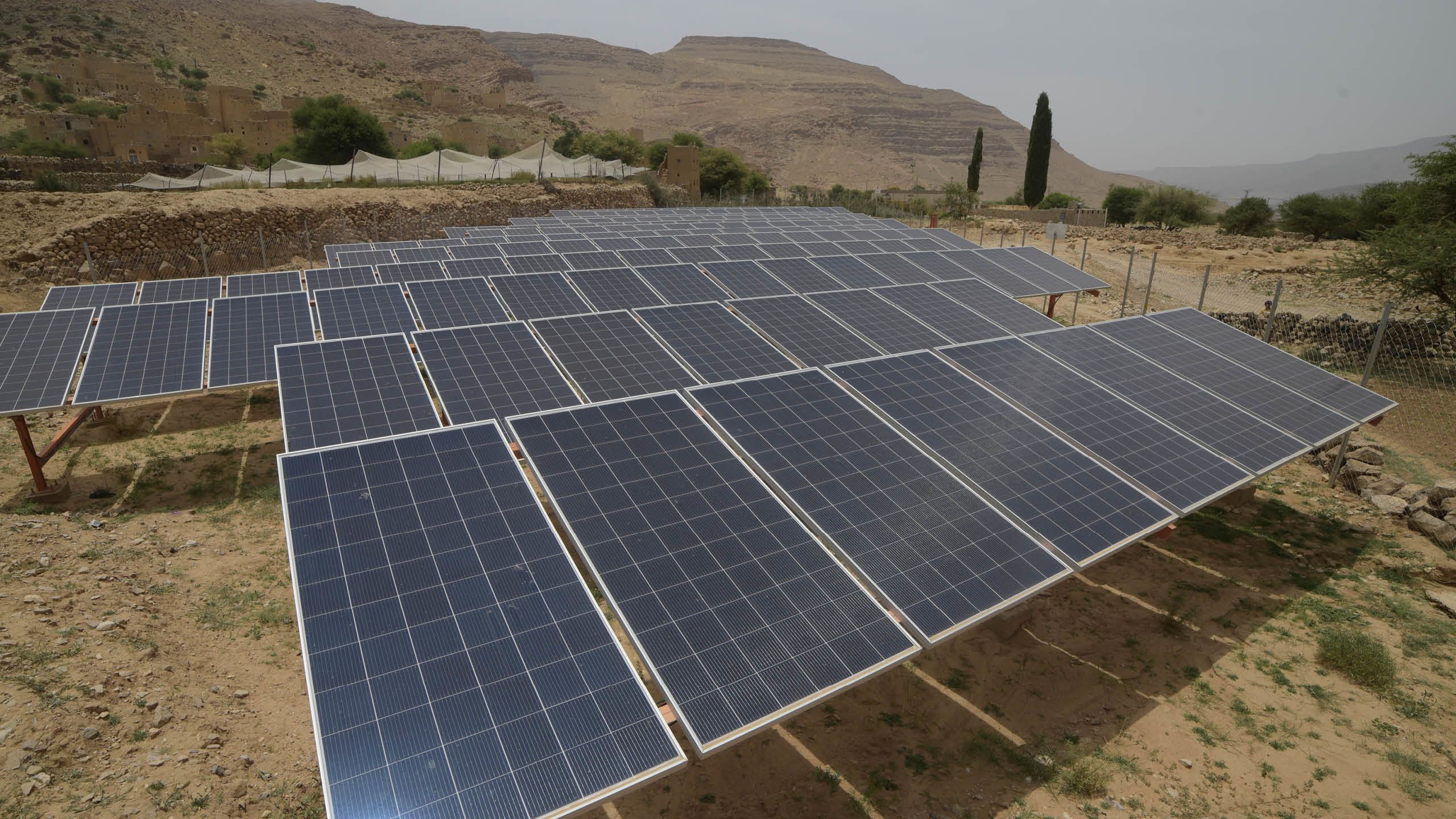
A new solar system powers the local water network supplying Kharef camp, Amran. Photo: Ibrahim Al-Salmi/NRC
This is one of 39 water systems NRC has upgraded in Yemen in less than two years. Solar power has grown exponentially in Yemen as a stable – and environmentally friendly – alternative to diesel and petrol, which the war has made expensive and scarce.
The project has changed things dramatically, according to local resident Ramzi Al-Shibri. Over 100 families in the camp now have access to plentiful, free and clean water
“It was done in the right place and right way,” Ramzi says. “It solved the entire water problem.”

A new solar system powers the local water network supplying Kharef camp, Amran. Photo: Ibrahim Al-Salmi/NRC
A new solar system powers the local water network supplying Kharef camp, Amran. Photo: Ibrahim Al-Salmi/NRC
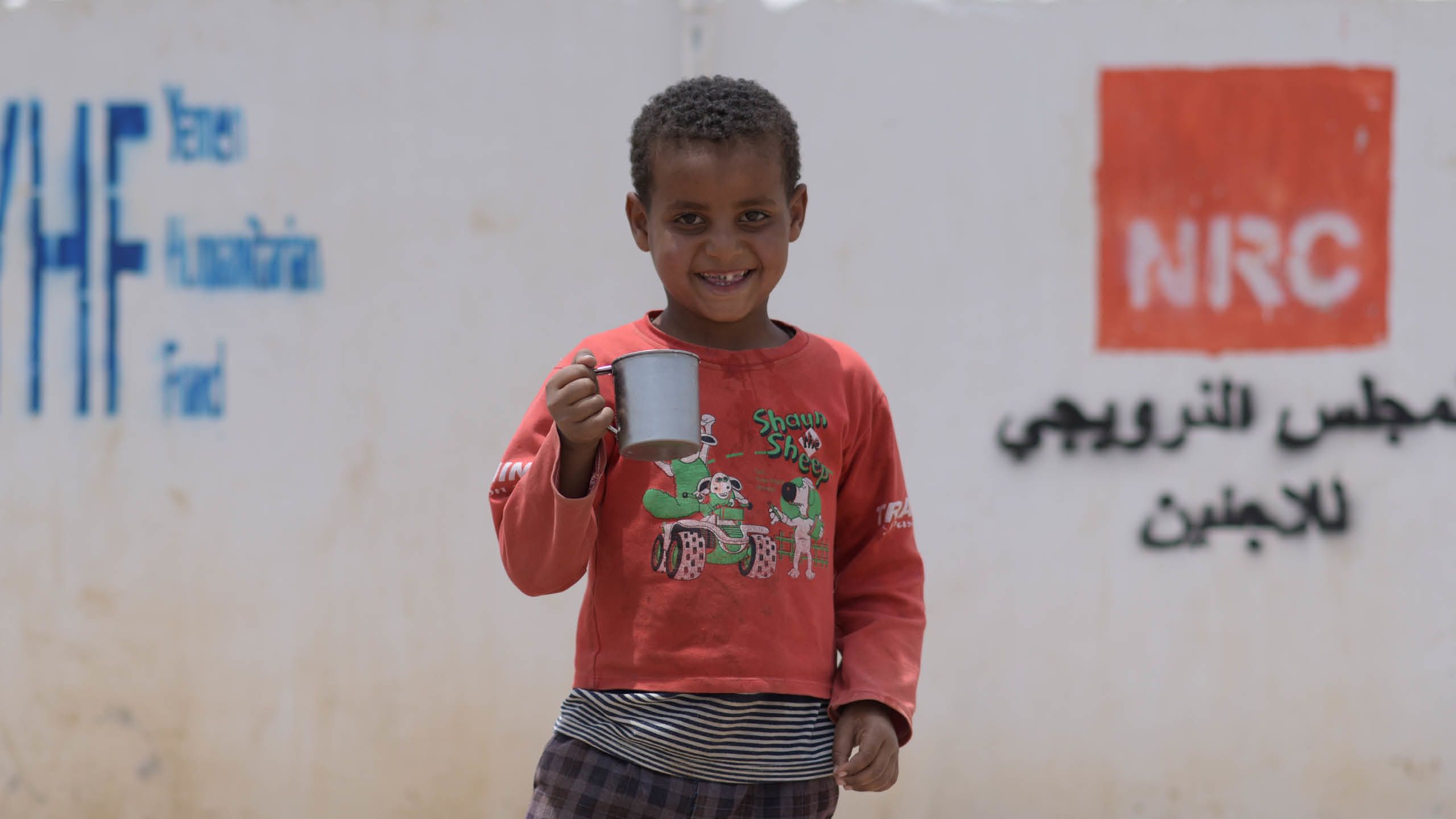
A child drinking water in Kharef camp, thanks to a new solar-powered pump linked to a borehole. Photo: Ibrahim Al-Salmi/NRC
A child drinking water in Kharef camp, thanks to a new solar-powered pump linked to a borehole. Photo: Ibrahim Al-Salmi/NRC
These upgrades were financed by the Yemen Humanitarian Fund (YHF), which is supported by donors from around the world. The new water system benefits both the existing residents in the area and the families who have fled there. It’s essential to help both groups, as most displaced people in Yemen are being assisted by local communities, who are themselves often struggling to get enough water.
Solar pumps and schooltime
We provided a similar solution in Al-Janah village, home to a single well that is the only water source for six other villages.
Since the war began, the population here has doubled, as families have fled from more violent areas. The diesel-powered pump made it too expensive to provide water for everyone.
“People here are farmers,
but with the water shortage, farms started to disappear.”
“We suffered, the children suffered,” says Yousif Agili, a local resident. “The children were forced to go looking for water instead of going to school. People here are farmers, but with the water shortage, farms started to disappear.”
NRC repaired the water system and installed a purification station, pipes, and a solar-powered pump. “At least now,” says Yousif, “instead of fetching water, children can go to school.”
Bringing water closer
to those who need it
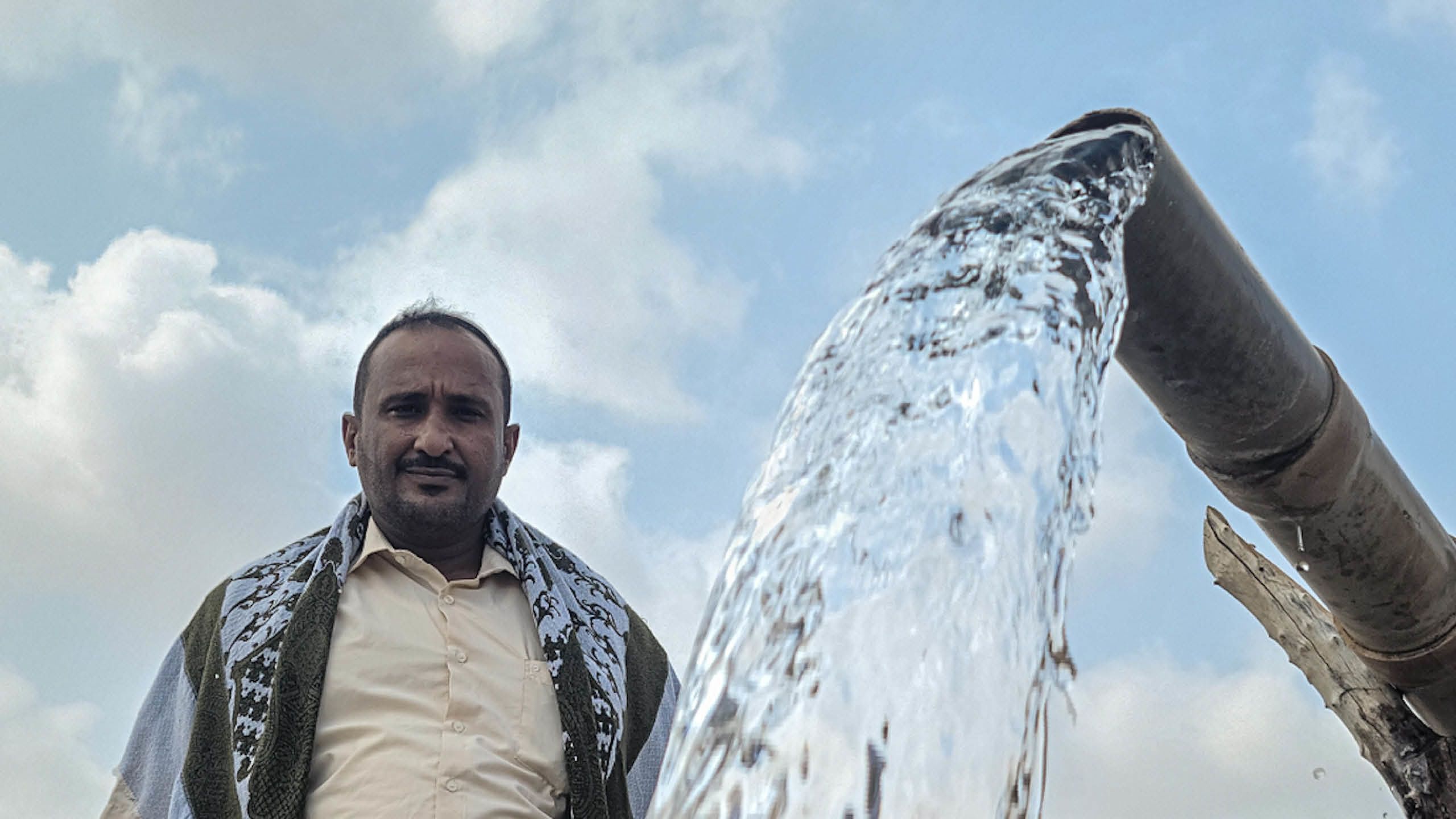
Fetching and carrying water from distant wells is an arduous, time-consuming process for many Yemenis.
“Getting water is a nightmare for everyone in this area,” says Ali Hashem, who lives in Abs district. People here have always faced a shortage of water, but the number of people fleeing to the area in recent years has made the problem even worse.
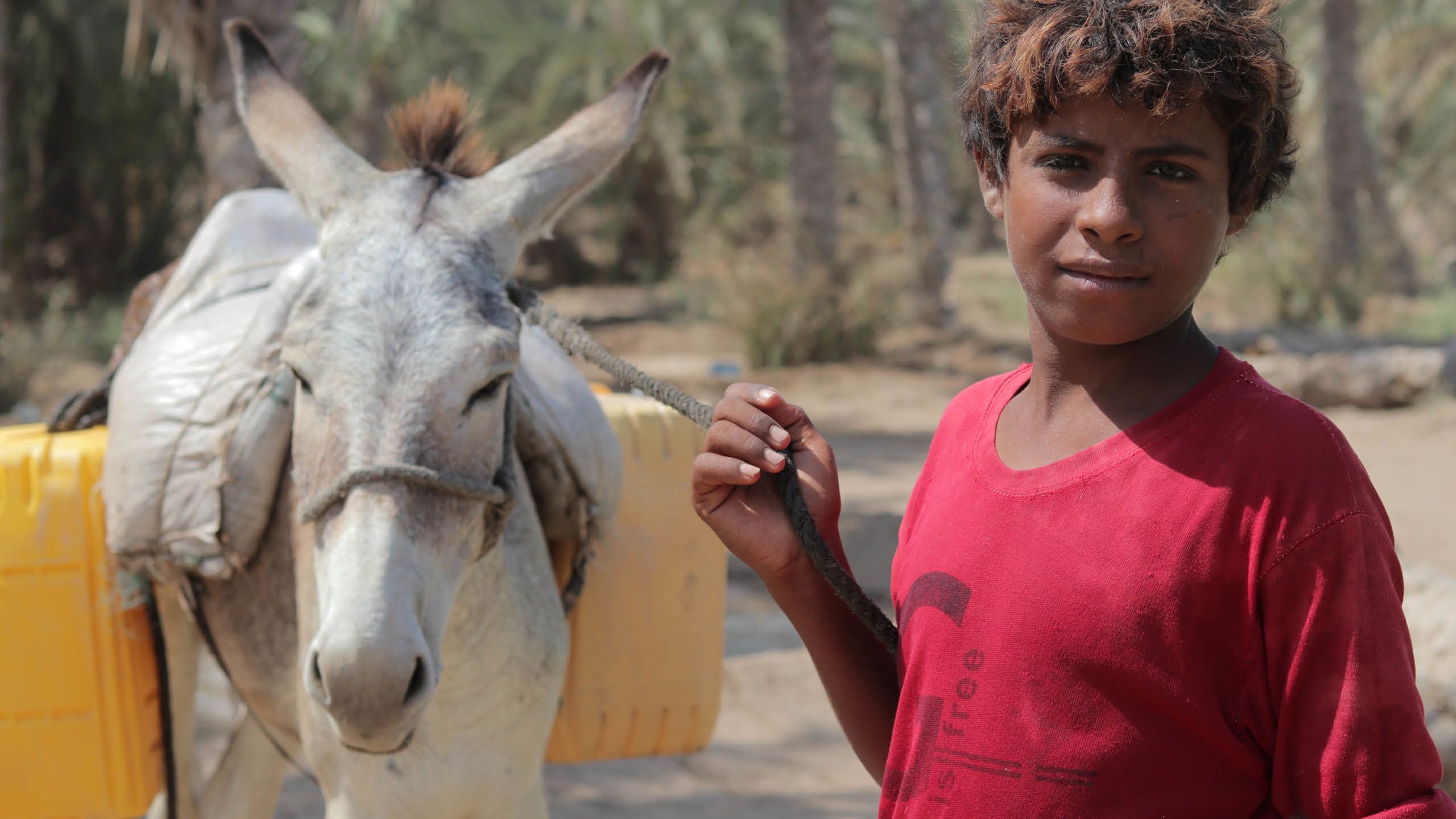
Khalid Mohammed, 15, must carry water every day by donkey to his tent in Hodeidah governorate. Photo: Mahmoud Al-Filstini/NRC
“Some families have donkeys, but the majority – like mine – carry water on their heads.”
Children and women had to queue at the well. It was arduous physical labour to bring the water back.
“Some families have donkeys, but the majority – like mine – carry water on their heads,” says Ali. “Many children stopped going to school to help their families fetch water.”
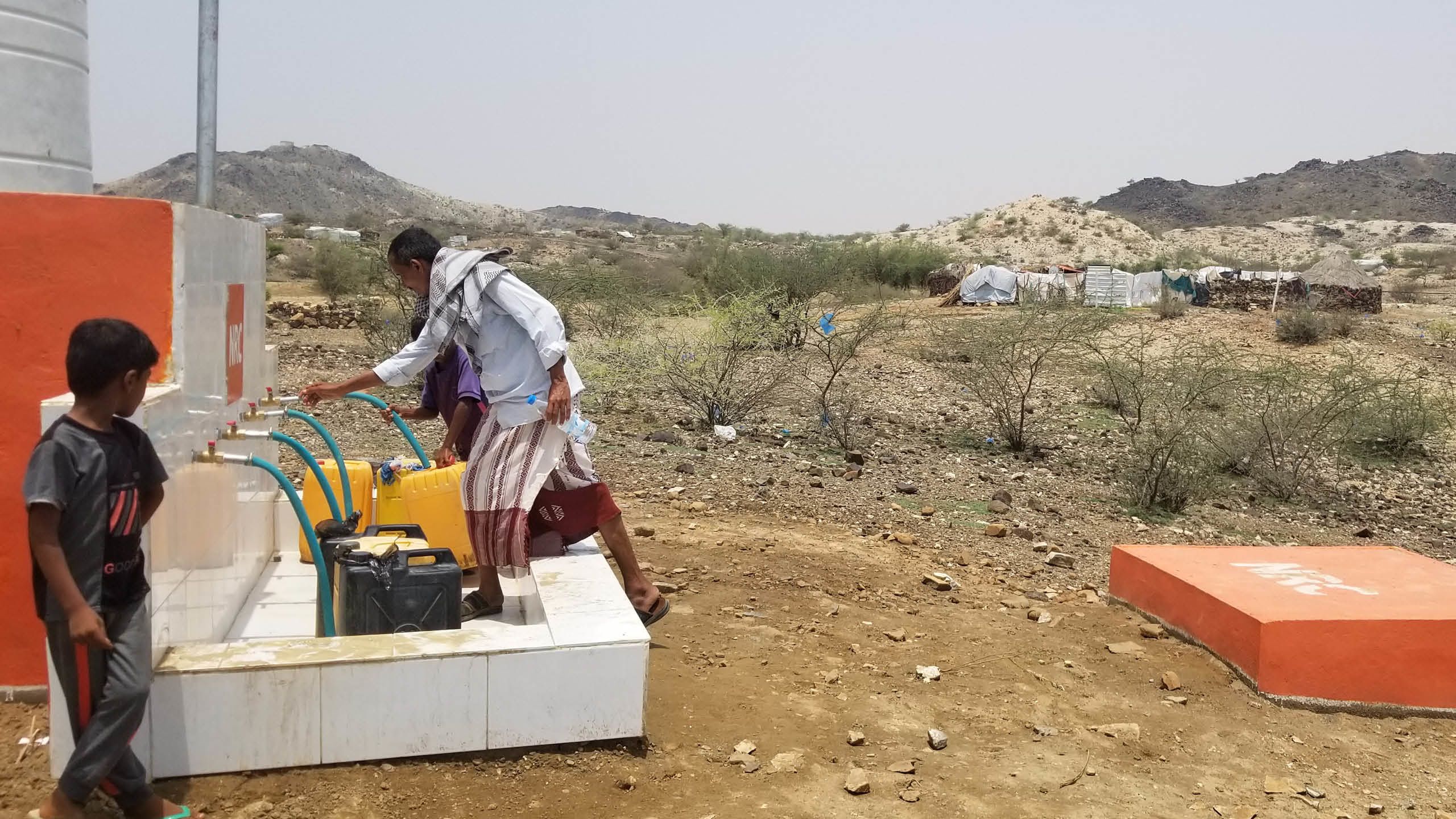
Ali at one of the new water points and tank constructed by NRC in Abs, Hajjah governorate. Photo: Sohail Al-Qattab/NRC
NRC’s teams, supported by the YHF, have built 20 water points in Abs and provided each with a 3,000-litre tank. “More than 900 families receive drinking water from these tanks,” Ali says.

Khalid Mohammed, 15, must carry water every day by donkey to his tent in Hodeidah governorate. Photo: Mahmoud Al-Filstini/NRC
Khalid Mohammed, 15, must carry water every day by donkey to his tent in Hodeidah governorate. Photo: Mahmoud Al-Filstini/NRC

Ali at one of the new water points and tank constructed by NRC in Abs, Hajjah governorate. Photo: Sohail Al-Qattab/NRC
Ali at one of the new water points and tank constructed by NRC in Abs, Hajjah governorate. Photo: Sohail Al-Qattab/NRC
A six-kilometre lifeline
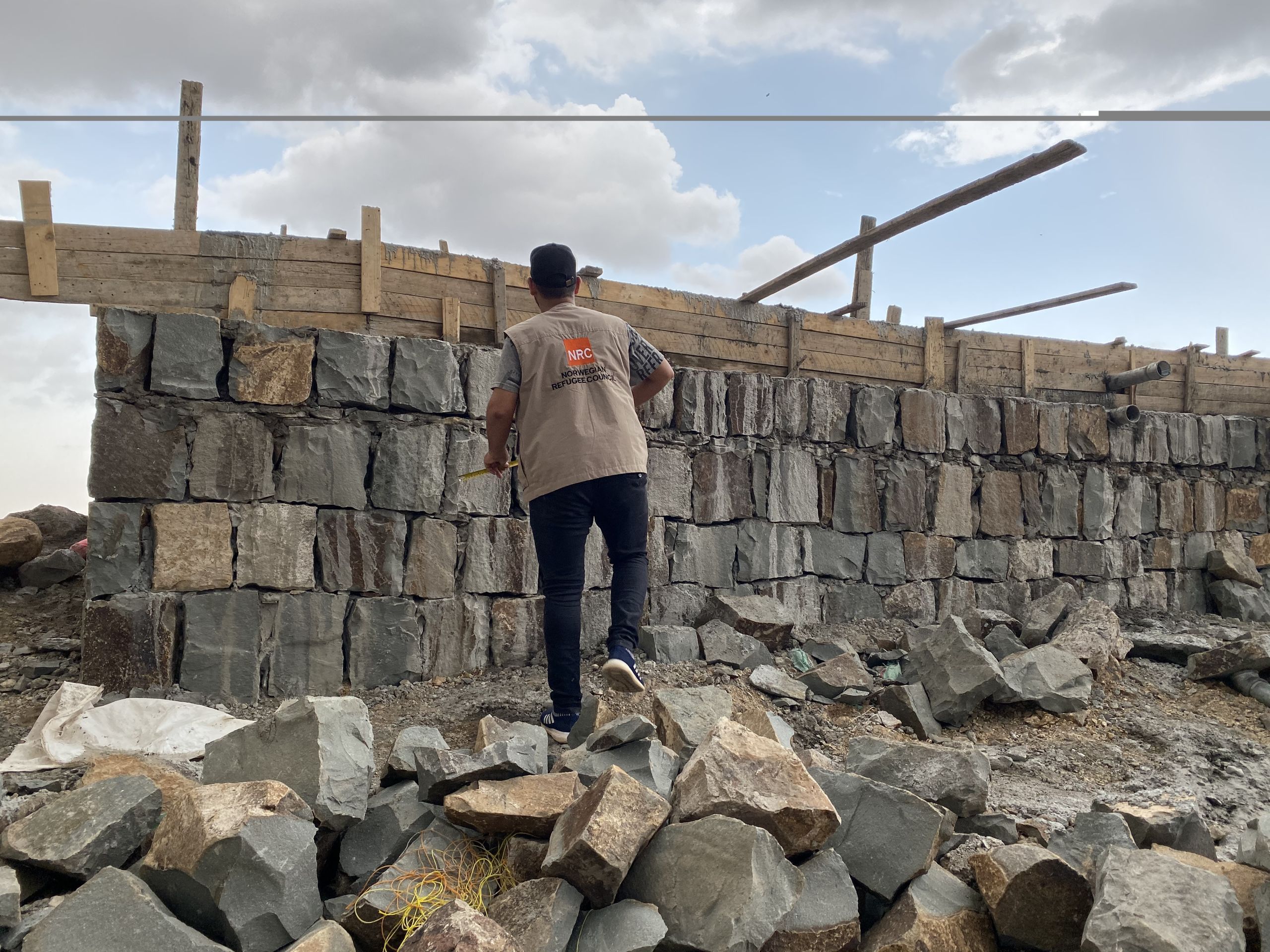
Yahya Mohammed Balush lives in the same district as Ali. He fled Harad city in 2015, when it was engulfed in violence.
When he arrived in his current village there were no shelters, so Yahya built a straw hut by hand. He and his wife now have two children, but it has been a difficult time for this new family.
“There was no water in the camp,” Yahya explains. The nearest functioning wells were four kilometres away, and eight trips a day were needed. The task of fetching water in Yemen often falls to women and children, who have to take long and sometimes risky journeys on foot.
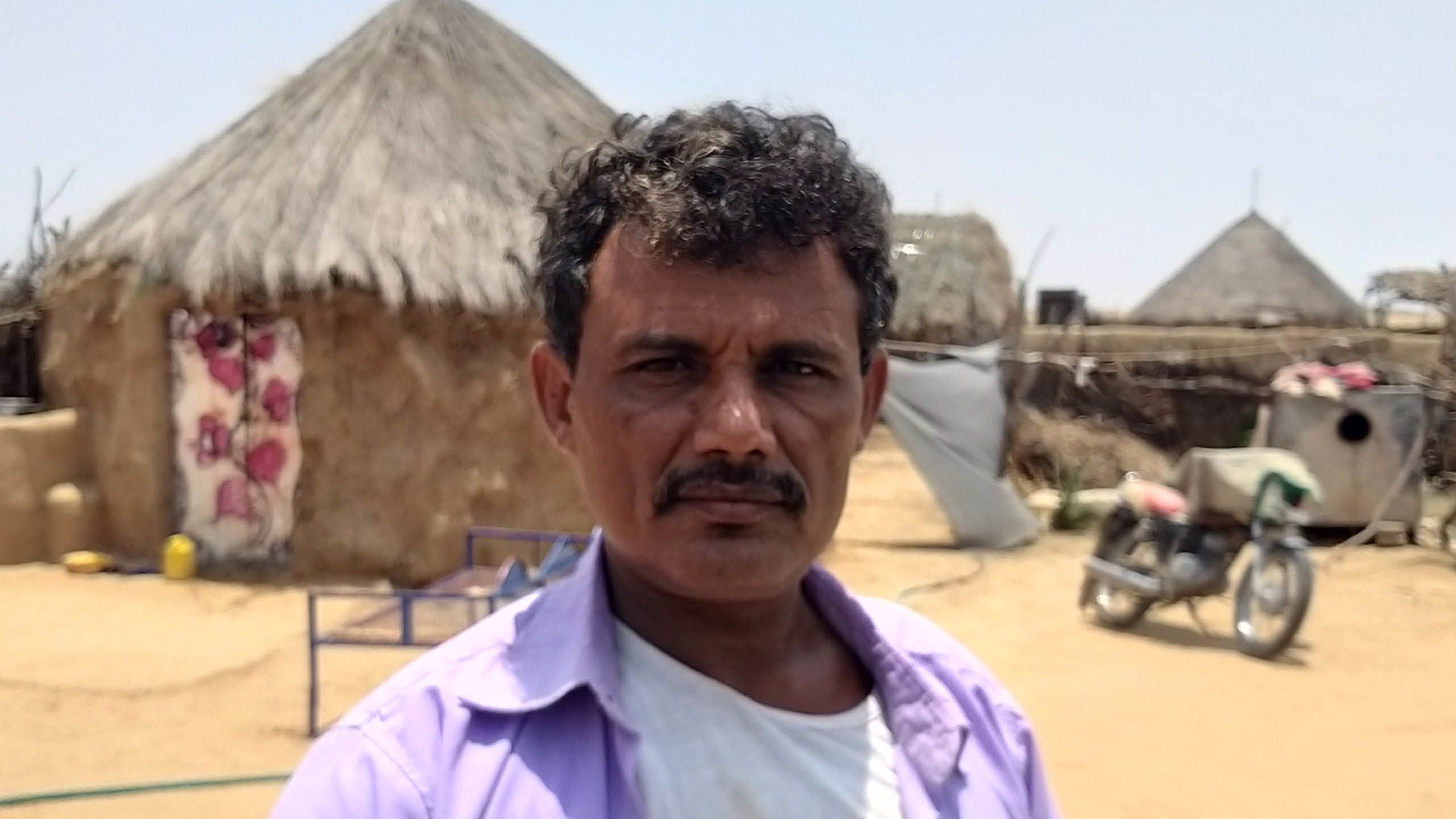
Yahya Mohammed Balush in the small village where he now lives in Abs district, Hajjah. Photo: Mohammed Al-Sharabi/NRC
The most frustrating part was that there was a much closer well in the village. But it was damaged and unable to provide enough for all the new families.
“We have all the water we need. The water comes to our homes now!”
With funding from the YHF, NRC repaired the well and laid over six kilometres of pipes. Now, the 473 families living in the village are all connected to the well. “We have all the water we need,” Yahya says. “The water comes to our homes now!”
Not enough wells
But a quarter of a million people in the Abs area, where Ali and Yahya live, still don’t have enough clean water.
“We meet people who are drinking contaminated water or spending money on water when they can barely get enough to eat.”
“There are thousands of displaced families here, and not enough wells,” says Anas al-Kahlani, NRC’s water and sanitation manager in Abs.
“Many wells are abandoned or dried up, forcing people to travel kilometres to the nearest water source. We meet people who are drinking contaminated water or spending money on water when they can barely get enough to eat.”

Yahya Mohammed Balush in the small village where he now lives in Abs district, Hajjah. Photo: Mohammed Al-Sharabi/NRC
Yahya Mohammed Balush in the small village where he now lives in Abs district, Hajjah. Photo: Mohammed Al-Sharabi/NRC
Water and sanitation just
36 per cent funded
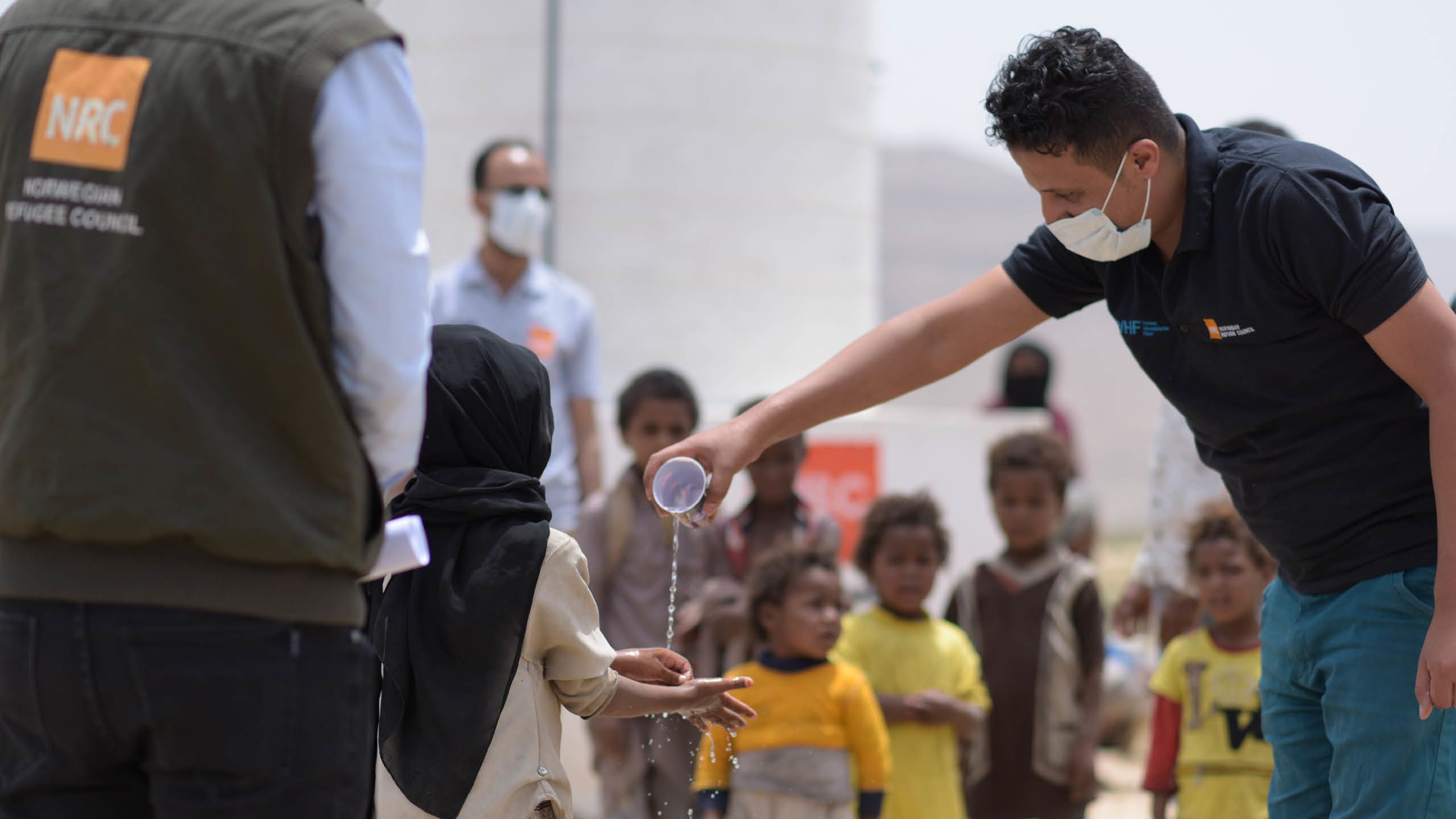
This situation is repeating right across Yemen. Aid organisations have been stepping in to help, but donors have currently funded only 36 per cent of Yemen’s water and sanitation needs. City water networks have begun shutting down or scaling back, with 15 major cities now running at only half their normal water capacity.
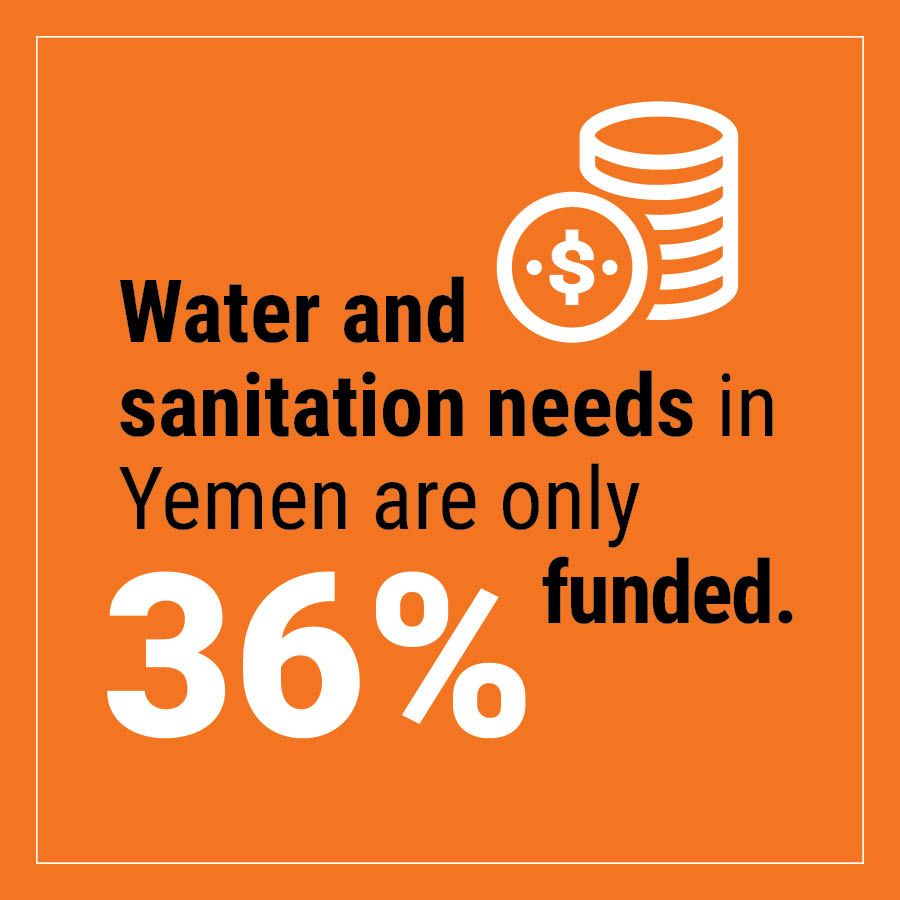
“It’s disastrous,” says Anas. “Some aid agencies are pulling out because they have no resources. We are expecting a spike in dengue, cholera, Covid-19 and other water-related illnesses as the rainy season approaches. How can people stay safe without enough water or soap to even wash their hands?”
We are calling on governments around the world to step up funding for water and sanitation, to stop further outbreaks of deadly diseases among people already battered by years of violent war. NRC will continue to help communities in Yemen get clean water. Please consider donating to support our work via the links below
Our water projects in Yemen are funded by the Yemen Humanitarian Fund, the United Nations Children’s Fund (UNICEF), humanitarian aid from the European Union, and the Norwegian, British, French, Swiss and Swedish governments.

